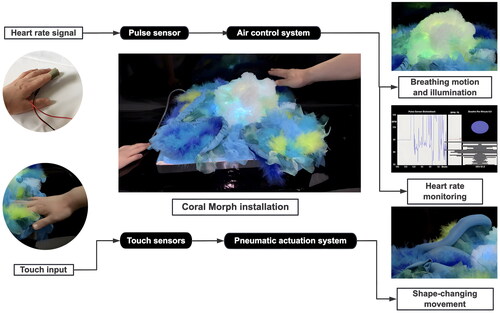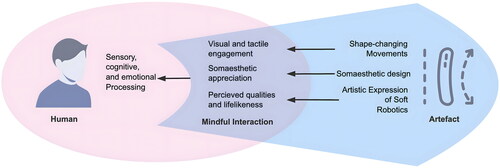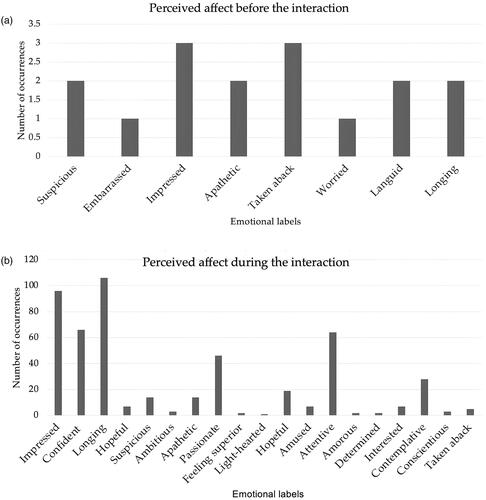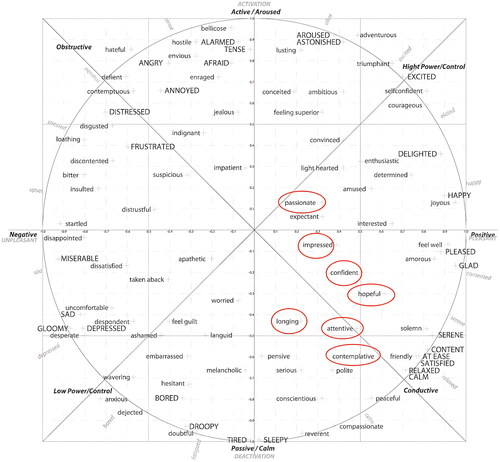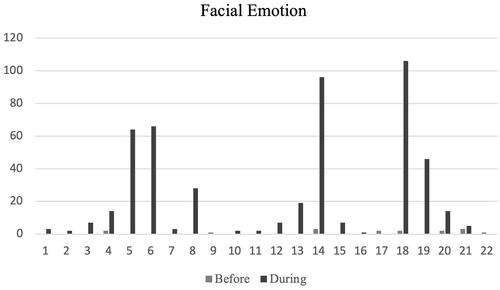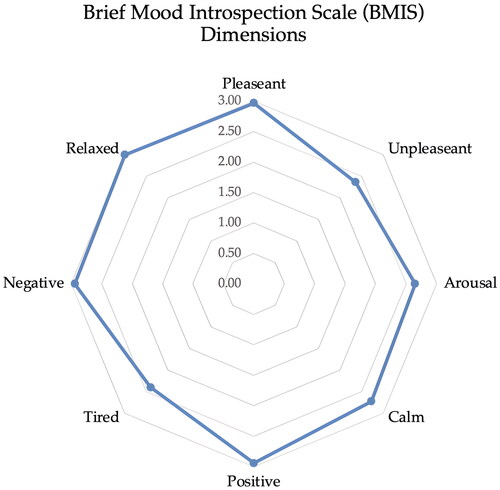Figures & data
Table 1. Participants ’demographic information.
Figure 4. The exhibition. (a) The pulse sensor connected to the participant’s finger; (b) one participant interacting with Coral Morph.
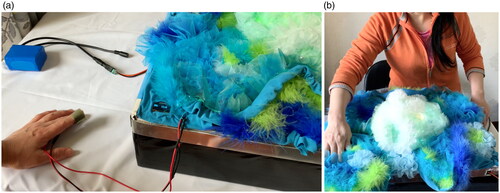
Table 2. Descriptive statistics for the facial emotions.
Table 3. Test of normality for the facial emotions.
Table 4. Descriptive statistics for the SAM arousal and valence.
Table 5. Descriptive statistics for the BMIS dimensions.
Table 6. Between-subjects effects.
Table 7. Self-reported emotions according to gender.
Table 8. Mindfulness, arousal, and valence difference.
Table 9. MANOVA with Roy’s largest root.
Table 10. Between-subjects effects.
Table 11. Trait-meta mood scale (TMMS) dimensions descriptive statistics.
Table 12. Descriptive statistics for the STQ.
Table 13. Descriptive statistics for the GQS dimensions.
Table 14. Descriptive statistics for the PSI dimensions.
Appendices new.docx
Download MS Word (51.5 KB)Data availability statement
The pseudo anonymized data supporting the findings of this study can be requested from the corresponding author.

